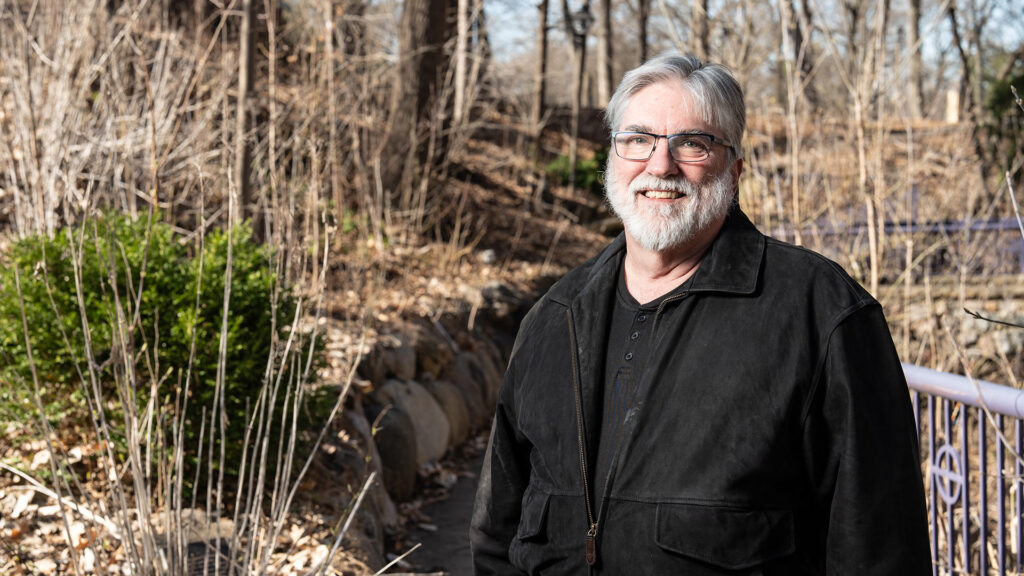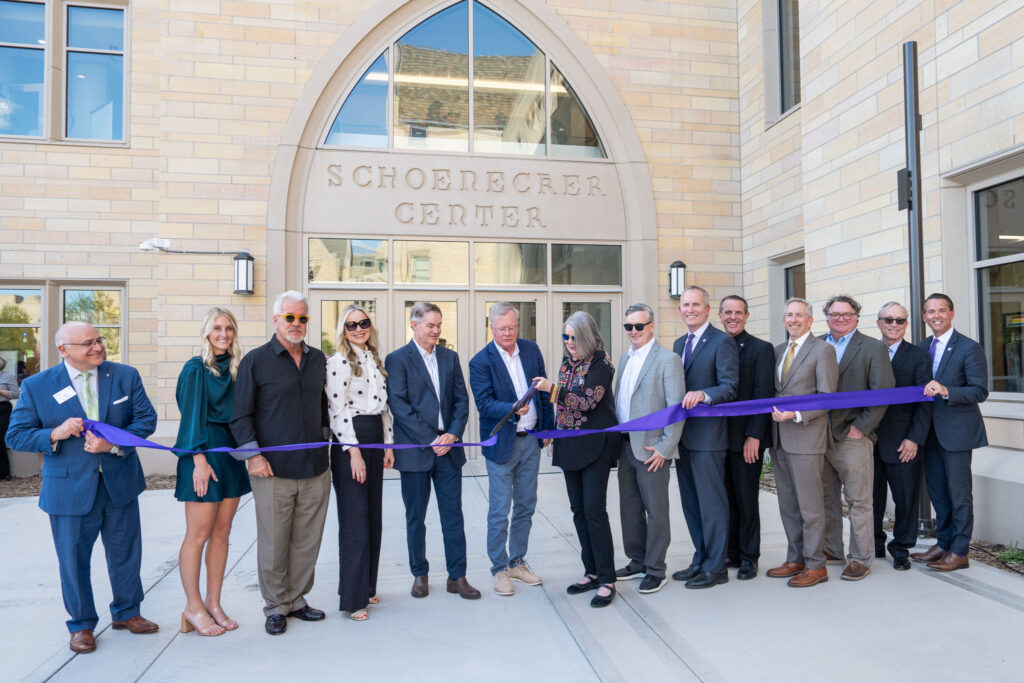Biology major Shaylee Beckfield ’25 believes bacteria can get a bad reputation. This spring she’s helping correct any misconceptions – one colorful petri dish at a time.
As part of a series of Agar Art workshops inside the brand-new Schoenecker Center at the University of St. Thomas in Minnesota, Beckfield has passed out dozens and dozens of petri dishes. While about half are empty, the other half contain an assortment of carefully selected bacteria – singled out for their highly colorful attributes. Participants are asked to create living art using the pigmented bacteria as their palette and fresh petri dishes as their canvas.
The Schoenecker Center was designed to bring together different disciplines to create a transdisciplinary space where students, faculty and staff can grow academically and multiply appreciation for their respective disciplines.
One way the university accomplishes this is through “Connecting the Visible and Invisible Worlds of Art and Microbiology,” an interdisciplinary project led by Dr. Joanna Klein of the Biology Department and co-coordinated by Dr. Heather Shirey of the Art History Department.

The project provides a space for experiential learning opportunities that bring the Tommie community together to develop a deeper understanding of and appreciation for the ways in which art history, art objects, and microbiology are connected. Throughout 2024 and beyond, special grant funds are being used to host Agar Art workshops, faculty and student research, and even a Living Learning Community.
Creating conversations between disciplines
“We want to make sure that people don’t just think about art as decoration,” Shirey explained. “It can create conversations between our disciplines, microbiology and art history, and engage people to think about art and science from interdisciplinary perspectives.”
Furthermore, Shirey wanted to collaborate with Klein to encourage students with an art history background to better embrace science, in addition, to enlighten students in STEM who may lack an appreciation for art history. By bringing the two disciplines together, Shirey wanted to make it accessible for students of both backgrounds.
As part of research and sustainability week, the Biology and Art History departments hosted Agar Art workshops, offering students and staff hands-on experience. Art History students created an online gallery to highlight their finished works.
Klein was inspired to bring the workshops to St. Thomas after being a finalist for the annual Agar Art competition sponsored by the American Society for Microbiology (ASM). She hopes to offer more workshops this fall to showcase the natural beauty of microbes, the creativity of scientists, artists, and students, and build connection and appreciation for art and microbiology.
“We invite people to make something that’s meaningful to them or taps into some of their own creativity,” Klein explained. “Hopefully at the end of the workshop people might say, well, microbes, they can be beautiful. They can be beneficial. You know, microbes are microscopic. You can’t really see them. But now they can see them on a petri plate so they can visualize what a microbe is.”





Third-year biology major and art history minor Rhiannon Wilson ’25 wanted to get involved in the Agar Art workshops because of her interest in the overlap between the two fields. In addition to co-hosting the workshops, she will also take part in a research project this summer, studying bacteria on the university’s Asmat art collection.
“Being able to combine with my two favorite fields is just like a dream come true,” Wilson stated. “It opens my eyes to all the different kinds of fields and how they combine.”
The art and biology project is one of several funded by the College of Arts and Sciences, which has challenged faculty working in the new Schoenecker Center to use the building to engage students in experiential and interdisciplinary learning.
“It’s one thing to build a building, but you have to take an active role in creating collaboration,” Shirey said. “These projects will create some long-term connections and some great opportunities for students to see the connected nature of these various disciplines.”
In addition to the workshops and ongoing research projects, the university will offer a new Living Learning Community for undergraduate students with an interest in art history, microbiology and museum studies this fall.
Senior Writer Abraham Swee contributed to this story and produced the featured video.






